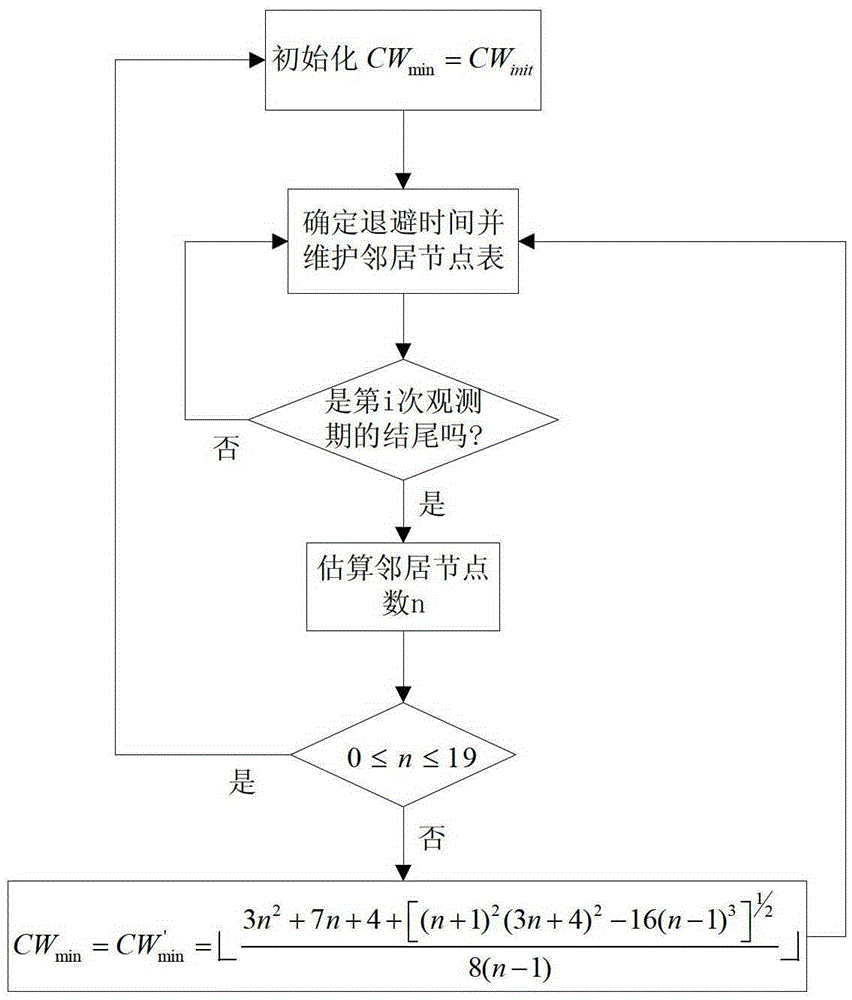A minimum contention window adjustment method based on the estimation of the number of neighbor nodes in vehicular network
A technology of competition window and neighbor node, applied in the field of in-vehicle network, can solve the problem of not using RTS/CTS handshake protocol, not using BEB, etc.
- Summary
- Abstract
- Description
- Claims
- Application Information
AI Technical Summary
Problems solved by technology
Method used
Image
Examples
Embodiment Construction
[0063] The technical solution of the present invention will be further described below in conjunction with the accompanying drawings.
[0064] We use VanetMobiSim and NS2.35 to simulate and verify the method proposed by the present invention, and compare the performance of the minimum contention window adjustment method based on the estimation of the number of neighbor nodes with the original fixed-size initial contention window. In the broadcast performance simulation process of IEEE802.11p, each node works on the control channel CCH, and periodically broadcasts data frames to its one-hop neighbor nodes, and all broadcast frames have the same priority. The present invention will use the PBCAgent in the latest NS2.35 to generate periodic broadcast frames. The broadcast frame size is 250 bytes, and the broadcast frame generation frequency is 5Hz. Considering the mobility of vehicles, we built a highway scene under VanetMobiSim. In this scene, there are four two-way lanes in t...
PUM
 Login to View More
Login to View More Abstract
Description
Claims
Application Information
 Login to View More
Login to View More - R&D
- Intellectual Property
- Life Sciences
- Materials
- Tech Scout
- Unparalleled Data Quality
- Higher Quality Content
- 60% Fewer Hallucinations
Browse by: Latest US Patents, China's latest patents, Technical Efficacy Thesaurus, Application Domain, Technology Topic, Popular Technical Reports.
© 2025 PatSnap. All rights reserved.Legal|Privacy policy|Modern Slavery Act Transparency Statement|Sitemap|About US| Contact US: help@patsnap.com



